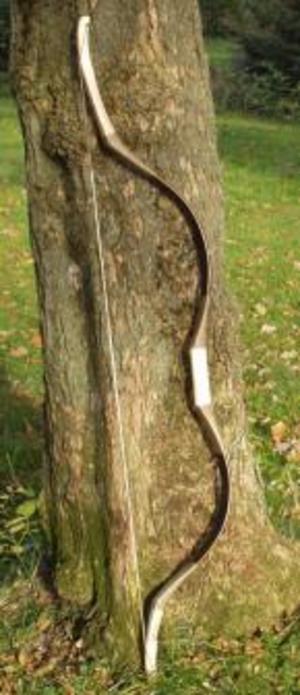If you’ve decided that you want to get started in bowhunting, the first thing you’ll need is a quality bow. Of course, if you head to a sports store and just start looking at products, you’ll likely be overwhelmed by the sheer volume of choice. You’ll find that some famous hunters will tout one bow, while another group will rave over yet another type. It really is a matter of preference, but the real question is whether you want a traditional or high-tech bow.
I would always recommend that beginners start bowhunting with a high-tech bow, if only because it’s far easier to learn. There is less margin for error than with a traditional bow, and it does a great majority of the work for you. Of course, some hunters would say that learning on a traditional bow will make all future hunting excursions much easier, so again it’s a matter of personal preference.
The Archery Research AR-34, for example, is the epitome of high-tech. It’s chambers help to reduce vibrations in the hand, the limbs come with a lifetime warranty, and it has a CamLock cable guard system for easy adjustments on the fly. Of course, it is also an expensive bow, and those getting started in bowhunting might not want to shell out $600 for a learning instrument.
The major benefit to a high-tech bow is the ease of use. It usually absorbs some of the weight that would otherwise be carried to the hunter, and it improves the accuracy of shots in inclement conditions. Some say that high-tech bows are stronger and longer-lasting, but this depends largely on the manufacturer and quality of materials. I have a traditional bow that I’ve been using since I was thirteen years old, and there isn’t a mark or scratch or weakness in the entire thing.
If you’re going to buy a traditional bow to get started in bowhunting, expect to spend far more time in the field, practicing and learning the structure of your bow. Since many of us have to play hooky just to get off work for opening weekend, bowhunting can be significantly compromised by a difficult bow. If you don’t have the time to put into practice, a high-tech bow is far more practical.
Your best bet is to find a friend or relative with large selections of both traditional and high-tech bows, or to preview them at the store. Hold them in your hands, shoot them if you can, and get a feel for how they respond to your touch. A great bow is essential for quality bowhunting—for having a great time and for bagging a trophy. You don’t want to venture out into the field with a substandard bow that feels foreign in your arms.
It is also a good idea to purchase a new bow rather than a used one, whether you go traditional or high-tech. There are plenty of ways in which a bow can be mistreated—left out in the rain, stepped on, improperly shot—that you’ll want to avoid, especially if you’re a beginner. You’ll also want to make sure that your bow complies with industry guidelines, so make sure to check with your state and county for weight requirements and other laws.
